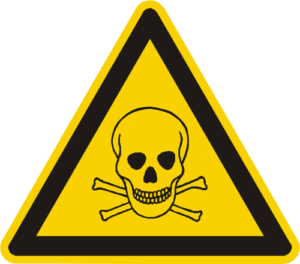Pesticide Store Management
In addition to keeping track of pesticides in store and ensuring tasks such as stock rotation are undertaken there are number of other areas that storekeepers should address.
- Are all containers and labels in a safe and readable condition? Occasionally chemical containers will deteriorate or even become damaged. It may be the chemical can be used in ongoing spray applications however it may be that these chemicals need to be earmarked for disposal
- Is the store clean and dry? The store should also be free of trip hazards and products should not be stored in a way that it blocks doorways.
- How is the store laid out? Liquids should always be stored below dry powders and granules. Different product types should be stored in their own marked out areas- so all herbicides should be stored together with fungicides and pesticides stored in the same way.

- Are flammables stored in a separate section and are they stored well away from oxidising agents?
- Is the spill kit well maintained and ready for use? Spill kits should contain inert absorbent materials, a brush and pan along with high strength polythene sacks.
- Personal Protective Equipment (PPE) should be readily available and in a serviceable condition. The PPE should include:
- Protective gloves,
- Coveralls,
- Aprons,
- Respirator,
- Face Shield,
- Goggles and
- Boots
- Is the store bunded and capable of holding up to 110% of the total volume of chemicals likely to be stored.
- Stores must also be secure and be locked at all times when not in use.
Chemical Store Design
When managed incorrectly pesticides can pose a huge risk to human health and the wider environment. The chemical store represents the first step to reduce this risk, with the aim of providing not only a safe working area for the operator but through preventing pollution offering the best protection to the environment by eliminating the risk of pollution. Pesticide stores should also be secure from vandalism and theft and provide a suitable stable environment for the chemicals held within.
Where should a chemical store be sited?
Chemical stores require to be sited away from the water environment and areas prone to flooding, so must be at least
- 10 metres from open drains, burns, ditches, lochs, wetlands or coastal waters
- 50 metres from any spring that supplies water for human consumption
- 50 metres from an uncapped well or borehole
Thought also needs to be given to the worst-case scenario - if there is a fire where would the contaminated fire water drain to? Any potential pollution risk here also needs to be considered.
Pesticide stores should also be isolated, either as standalone structures or as part of an existing unoccupied building. In both cases, a minimum 4-metre moat space from combustible materials or sources of ignition e.g. straw, hay, fertiliser should be in place.
Pesticide stores should also be sited away from domestic residences and overhead powerlines.
The location of the pesticide store should also be convenient for both the delivery and collection of chemicals by suppliers and also allow easy access for emergency services.
New build or conversion?
Pesticides stores can take many forms.
| Type | Pros | Cons |
|---|---|---|
| New standalone structure | Should meet bunding and fire standards easily | Potentially costly from building costs to excavation and installation of power and water |
| Existing detached structure | Utilises existing structure | May require removal of combustible materials and any drains sealed. Bunding will also require to be installed |
| Converting part of larger building | Cheaper than new standalone structure | As detached structure however may also require: Separate direct access point to outside of building. Fire walls should extend to roof to prevent spread. Requires to be effectively bunded |
| Other Structures- shipping containers etc. | Can be cheaply bought and placed away from other buildings | As detached structures however may also require: Low level ventilation ducts to be sealed up. Monitoring of wall to floor joints for deterioration Can be costly convert in terms of bunding etc. |
| Cabinet stores | Ideal for smaller scale |
Size and specification
A pesticide store should be big enough to contain the maximum volume likely to be kept on site. This will need to hold:
- the farms peak pesticide requirements,
- any full or part containers remaining from previous applications
- any chemicals which have been unable to be applied.
- any hazardous waste
- the farms planned peak chemical requirements in the future.
The store should also be able to hold other bulkier pesticides such as slug pellets, rodenticides and wood treatment chemicals.
In addition, the store needs to be large enough to allow personnel to operate in a safe and ergonomic way.
Rinsed empty containers may also require storage until disposal however they can be stored in another location.
A chemical store also requires to be:
- Effectively bunded and capable of containing any leaks and spills.
- Dry and well ventilated
- Capable of being locked and be fully secure against both vandalism and theft
- Well lit (100 lux) both externally and internally, however, the use of direct sunlight should be avoided.
- Capable of containing all pesticide stock, containers and firefighting materials in the event of a fire.
- Secure from ingress by rodents and chemicals
- Correctly signed.
- Insulated against frost
- Fire-proof with walls requiring to be fire-proof for a minimum of 30 minutes.
- Flooring should be impervious to spillage with wall impermeable at least to bund level.
Spill kit
All chemical stores should have a basic spill kit.
Need to Contact SEPA? Call the Hotline 0800 80 70 60
Sign up to the FAS newsletter
Receive updates on news, events and publications from Scotland’s Farm Advisory Service
